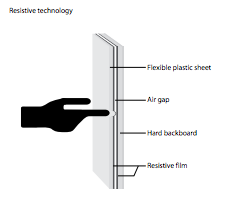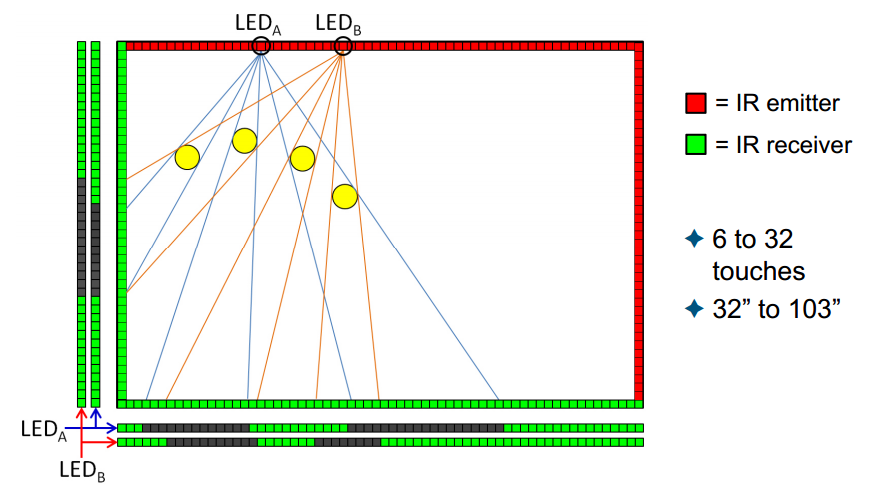The Technology behind Touch Screen Whiteboards
Posted: Jul. 13th, 2016
Today the world can't be imagined without touch screen devices. They are everywhere, be it smartphones, or the touch screen whiteboards in workplaces and education. Though it is very easy to use a touch screen device, however, very few people actually know about how they work and the technology behind that makes it all possible. Here are the three major principles/ways the touch screen whiteboards work.
1. Resistive Technology
The resistive touch technology is based on the principle of electrical resistance and current. It consists of two or more layers made from a conducting material separated by a very small gap between them. Also, there is a potential difference between the voltages of the two layers. As there is a gap between them, there is no current flow.
However, when the user places his finger anywhere on the screen, it gets pressed and there is a point of contact between the two conducting screens. This results in the flow of current at the point of contact. The sensors present in the screen system detect the location of the touch and produce the required output.
Touch screen whiteboards based on the resistive touch technology can be used with gloves, or using a pen etc.
2. Infrared Technology
Touch screen whiteboards using infra red touch consist of the LEDs emitting IR beams from the ends of the screen. As a result, a very fine grid of the rays is formed in the plane of the screen. When the user brings his finger in contact with the screen, the IR beams going from the one end of the screen to the other are interrupted. Therefore, the location of the touch can be determined very accurately. However, the presence of the dust can affect the functioning of the device altering the beam pattern.
3. Capacitive Technology
Touch screen whiteboards based on the principle of the capacitive touch consist of two electrically conducting layers separated by a layer of the dielectric material. The whole assembly can be thought of a large capacitor. The human body is also a conductor of electricity. Therefore, when the person brings her finger to the screen, the electric field of the screen is altered. However, the amount of change in the electric field layers determines the location of the touch.
The disadvantage of the capacitive touch is that they can't be used with gloves or using other material.
More and more technologies are emerging towards overcoming the drawbacks of the traditional touch devices. The recent touch screens can be operated using gloves and other materials without difficulty. In future, we can also expect the same level of development in three-dimensional virtual screens.
Previous:How Interactive Education Technology Can Improve Learning
Next:4 Benefits of Interactive Display in Hospitals and Medical Centers

